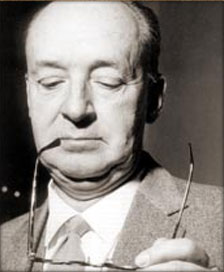Thus, the release of this inner man is commonly thought to be accomplished through death, which acts as a passageway between flesh and spirit and explains the confusion of events at the conclusion of Nabokov’s novel.
Cincinnatus accomplishes just this transformation: “He stood up and…took off his head like a toupee, took off his collarbones like shoulder straps, took off his rib cage like a hauberk…what was left of him gradually dissolved, hardly coloring the air”, and again, “Through the headsman’s still swinging hips the railing showed. On the steps the pale librarian sat doubled up, vomiting…Cincinnatus slowly descended from the platform and walked off through the shifting debris”.
Other religious symbols include:
The moon, which hangs outside of Cincinnatus’ cell window, and is a common Gnostic metaphor for “one of the seven Archons [demons] who keep watch over the gates to the planetary spheres”,
Cincinnatus’ enigmatic father, who models Gnostic belief in the “unknowable God…the unknown Father”,
And Cincinnatus’ mother, Cecilia C. who models the Gnostic notion of a Messenger, or Mediator, as she discloses the events surrounding her son’s birth.
Publication and reception
Second only to Lolita in terms of critical receptions, Invitation to a Beheading has received positive reviews since its initial publication in Berlin, 1934. It has also been considered “one of the most successful works of young émigré literature”.
Many scholars believed Cincinnatus C. to be a rendition of Franz Kafka’s main character, Joseph K. in his novel, The Trial, although Nabokov denied this.
Scholars have also noted the novel’s embellished style which straddles the “illusory and the ‘real'”, drawing parallels to Carroll’s Alice in Wonderland; Nabokov had served as that novel’s Russian translator in 1923. In addition, Nabokov’s execution scene has been compared to Kiernan’s chapter of Ulysses.
Film adaptation
In September 2021, Uri Singer acquired the rights to adapt the novel.
